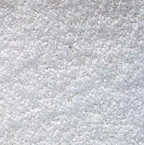 Sam is four and a half. He is a picky eater but he loves pasta with lots of cheese. Tomato soup and grape juice are also on his short list of favourite foods. All of these are foods with high concentrations of glutamic acid, an amino acid. One of these, monosodium glutamate, for reasons we don’t quite understand, seems to improve the flavour of food. Sam is four and a half. He is a picky eater but he loves pasta with lots of cheese. Tomato soup and grape juice are also on his short list of favourite foods. All of these are foods with high concentrations of glutamic acid, an amino acid. One of these, monosodium glutamate, for reasons we don’t quite understand, seems to improve the flavour of food.
Glutamates occurs naturally, to some extent, in all plants and animals. With some exceptions (such as peas, mushrooms, tomatoes, and potatoes), it is generally more concentrated in meat than vegetables. MSG is a commercially derived glutamate. For centuries it was made from seaweed. Today the small white crystals, which look like refined salt or sugar, are also made from corn, wheat, beets and molasses.
MSG’s flavour is difficult to describe. I find it has a complex slightly sour lingering taste that reminds me a little of well aged meat. By itself, MSG is not particularly pleasant; but when added, in very small amounts, to simple foods—I tried it in unsalted vegetable broth, on lettuce leaves, and with a slice of fresh apple—it pushes forward a food’s basic taste in a way that other flavour enhancers, such as salt or sugar don’t. Salt and sugar, in contrast, bring their own flavours to the fore. MSG, which was once called “epicurean powder”, enhances food just like appropriate music improves a good movie without our being aware of the effect.
Some recent studies refer to MSG as the fifth flavour—with salt, sour, sweet and bitter. They use the Japanese word umami to describe it. It translates roughly as “sublime experience.” As a flavour enhancer, MSG works best in foods with low concentrations of glutamate such as cooked vegetables. Not surprisingly it is often added to dishes which have little meat and is a common ingredient in Asian restaurants.
Used with too much abundance, however, MSG often indicates a poor chef in the kitchen and regular diners may find that the cumulative effect of extra MSG produces headaches, nausea, and flushes. (I once worked with an oriental woman who casually informed me that MSG was how “the Chinese got back at the white man.” At that time I was her boss and I wasn’t sure if she was joking.)
As with all foods, too much of any ingredient can cause problems; but MSG, in particular, gets bad press. Used in small amonunts, for people on a low sodium diet, MSG—which does contain sodium—may make food tastier and healthier than salt. And as for Sam, maybe its the glutamate that attracts him to grape juice, dairy products and tomato soup or maybe that’s simply what four and a half year-old boys like to eat.
© Barry Lazar 2000  |

|
|